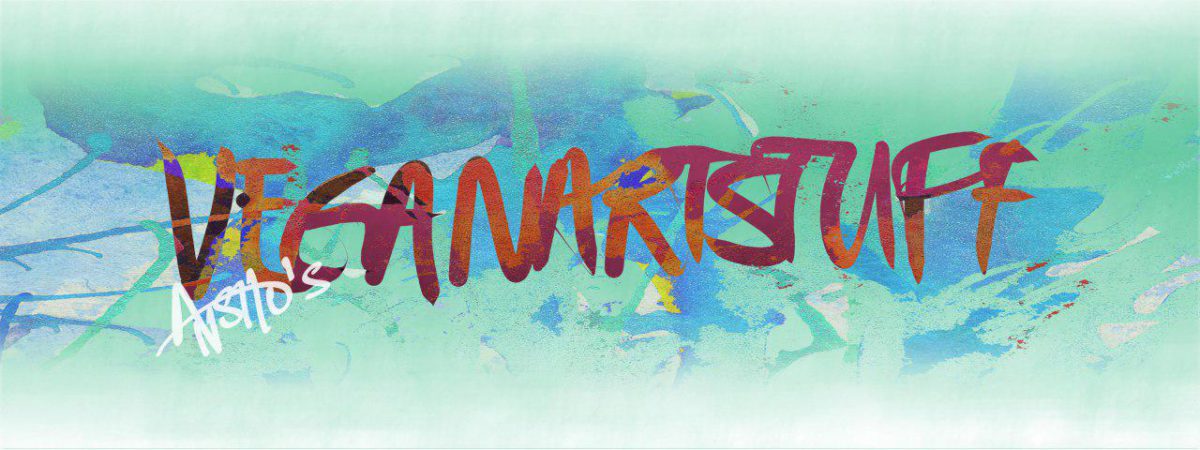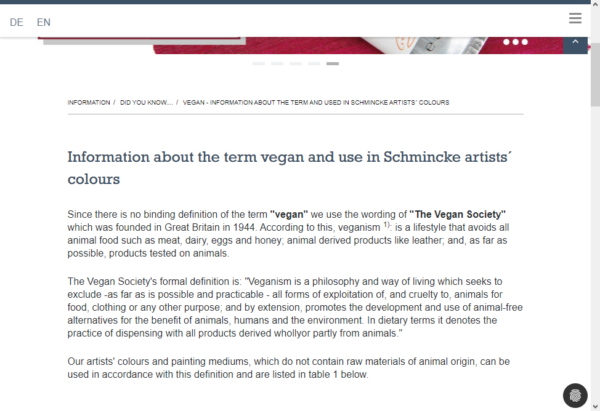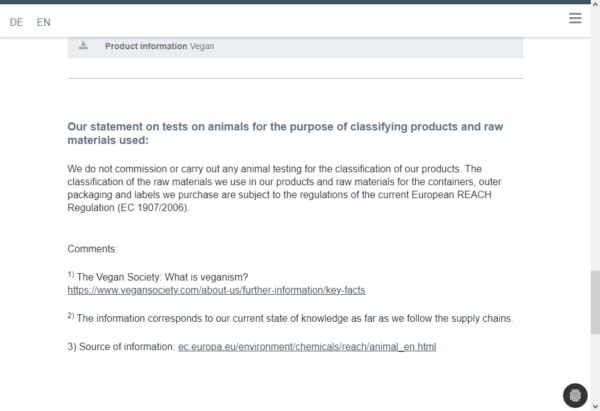Cruelty-free has a broader spectrum of meaning. Just like the word “vegan” it is not set in stone and has no universally accepted set terminology. Is is open to interpretation.
In its foremost use, in all things “vegan” and animal related, it applies to being “free of animal testing”.
You can find my other latest article about this topic over here. And below you find a short overview.
On product packaging you will find this word, for example. Which means, a company makes the claim that the product is free of animal testing. If a company makes no further statements, this term should only be applied to this finished product, not its manufacturing process, not a whole product range of a company nor the company’s overall stance on animal-testing.
cruelty-free labelling and levels concerning animal testing:
- a finished product is cruelty-free, meaning free of animal testing
- the finished product as well as production is free of animal testing
- a company is cruelty-free, if no further statement is given, this only means, the company itself does not test on animals
- with further information : a company does not test on animals, nor commission other parties to do so
- a company does not use data provided by others, such as MSDS /Material Safety Data Sheets, which information was gathered through recent* animal testing (*as in the last decades)
- the raw material supplier does not test on animals or commission animal testing (for the material sourced by the company)
This is how it is mainly viewed and used, but it is not the only interpretation. A reader recently pointed out to me that Faber-Castell produced a meat signing pen and could therefore not be seen as cruelty-free. You find my brief post about this over here.
Although this pen might have been free of animal derivatives (speculation for this explanation, I do not have any detailed information other than Faber-Castell stating this year that most of its products are free of animal derivatives), and the company might be free of animal testing, the pen’s intended use was connected to animal suffering.
Can a company be even free of any kind of cruelty in a broader sense that means more than ” animal testing”?
Most art and writing material suppliers do offer a range of products and not only products that are free of materials of an animal source.
Products containing
- milk derivatives,eggs, honey or beeswax being on the lower end, suitable for vegetarians,
- to the use of tallow, bone ash, rabbit skin glue, ox gall, squalene … all the different kind of hairs of so many animals roaming this planet used in brushes,
- also the use of natural sponge for watercolour.
None of these things are cruelty-free in a broader sens; at this point, only concerning animals.
It would be a rare thing to find a brush company solely dedicated to producing brushes that are vegan; meaning their entire product range being free of animal derivatives.
Unless a company only sells all the way vegan products and has a defined on all level applying cruelty-free (animal sense) ethic, there will have been animal suffering.
Now the question is how many there actually are out there free of any kind of suffering attached to raw materials.
Another point or part of this is, companies having different tiers of product “quality”, if you will. They have e.g. crafting and school supplies, art supplies of different levels (beginner, hobby, student, artist /professional) and their fancy high-end tier. Offering e.g. leather bound fountain pens and leather bound sketch- and notebooks. Leather rolls for your coloured pencils, … . Undeniably, there has been animal suffering involved. Even, if claimed, the hides, bone ash etc. being leftovers from the meat industry.
Unfortunately, we do not live in an utopian world, void of animal suffering and cruelty against them. Mankind cannot even keep from it, concerning each other. How can we even expect them to muster up some form of acknowledgement and concerns for other beings and mother earth itself.
Which leads me to”cruelty-free”‘s , the meaning concerning humans.
Generally, we can think of
- workers being treated ethically (not in direct contact with harmful chemicals, without protection, healthcare, safe environment to work in, hours of work, …)
- workers being paid adequately (not enough for living/living wages, under minimum wage, fair wages …)
- workers being paid equally (no gender bias, no age bias )
- child labour (starting at a very young age, risking their lives daily to support their families; not being allowed and /or having the means and opportunity of education; being forced into it …)
Although all the points above are important, child labour is standing out.
You will certainly stumble over child labour, if “Mica” is involved. Back some years ago, I mentioned Refinery 29’s short documentary about it and I also wrote a post about a company here, using “ethically” sourced Mica, their supplier being part of the “Responsible Mica Initiative”, working against child labour.
In the last week I happened upon a documentary on the channel 3SAT about said topic and initiative in India. The chairwoman informed the reporter that it does not mean, villages, areas, mines involved, are guaranteed free of child labour. It means they are working towards it, but it is not a guarantee, you won’t find a child at a mine, even if the initivative is working with people in the villages surrounding the mine.
The chairwoman also mentioned, natural Mica should not be avoided because it would take the lifelihoods of entire regions in India and Madagascar.
Some companies have changed to using synthetic Mica, e.g. Lush.
It still comes as a shock though, that the initiative does not come as a guarantee of no child labour .
Suprising is Mica’s different kind of use. Computer /phone companies, e.g. Samsung using Mica; drill holes being filled with it, some companies put it in toothpaste for optics and the list goes on. You only can ask why? How are we supposed to know, and what reasoning is happening, that companies are stuffing Mica into all those products? If it is not mentioned e.g. on a packaging for make-up or toothpaste, we won’t even be aware of it. A reason given for toothpaste being for optics? I don’t want to find titaniumdioxide in anything else but my art supplies; we art realm inhabitants have been aware of its carcinogen properties, because product packaging and information literally warns of it. I don’t want it in toothpaste and I certainly don’t want Mica in it. Who needs shimmery toothpaste? No one.
What company can be free of any form of cruelty, it can assume?
We can only keep on learning; and we can only keep on doing the best we can, acknowledging and adapting to new information we stumble upon.
The documentary I mentioned was aired on 3Sat on September 15th, 2023, when I was able to watch part of it. The reporter is Anne-Sophie Galli and the German name of the documentary was ” Glitzermineral Mica – Kinderarbeit für unsere Autos, Handys und Kosmetik” , translated : ” Shimmer material Mica – child labour for our cars, cellphones and cosmetics/ make up”. It was previously aired earlier this year here on youtube. There are unfortunately only German subtitles available at the moment.
For more information about animal based raw material, see my information sheet (German Version).


